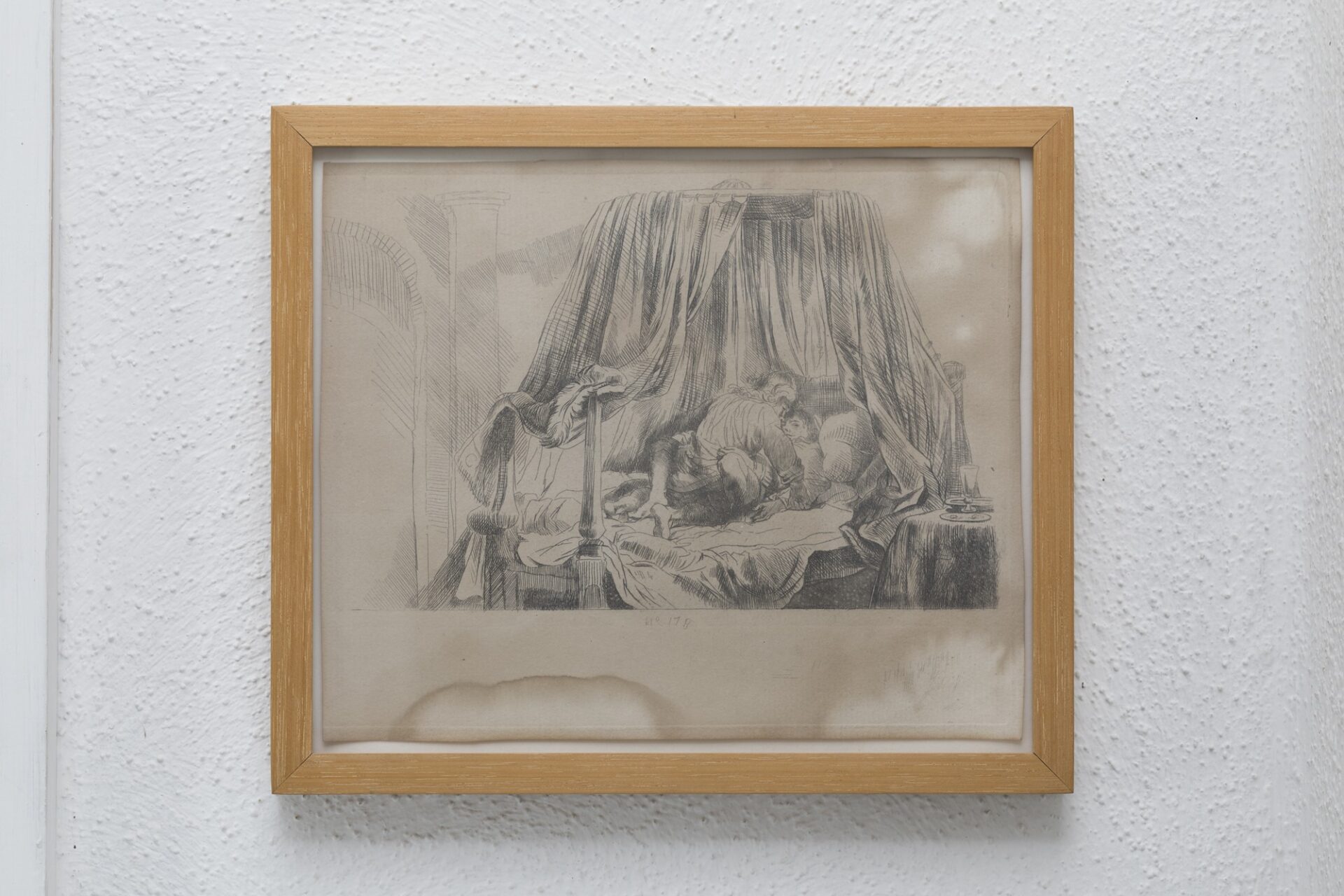Installed in the kitchen in the Block’s east building is Ledikant, also known as The French Bed, circa 1900. In this work, a plumed cap sits on top of the foregrounded post of the four-cornered bed. In his painting Self-Portrait with Saskia in the Guide of the Prodigal Son and the Harlot, c. 1665, Rembrandt depicts himself wearing a plumed hat; art historians have suggested that the plumed hat in the case of this self-portrait is associated with intemperance. Similar assertions have been made regarding the hat in The French Bed, suggesting that the plumed cap was emblematic of intemperate and amorous behavior.
Judd also installed two etchings by Rembrandt in an alcove in his Architecture Studio in Marfa, Texas: Student at a Table by Candlelight, c. 1642, and Nude Man Seated Before a Curtain, 1646.
